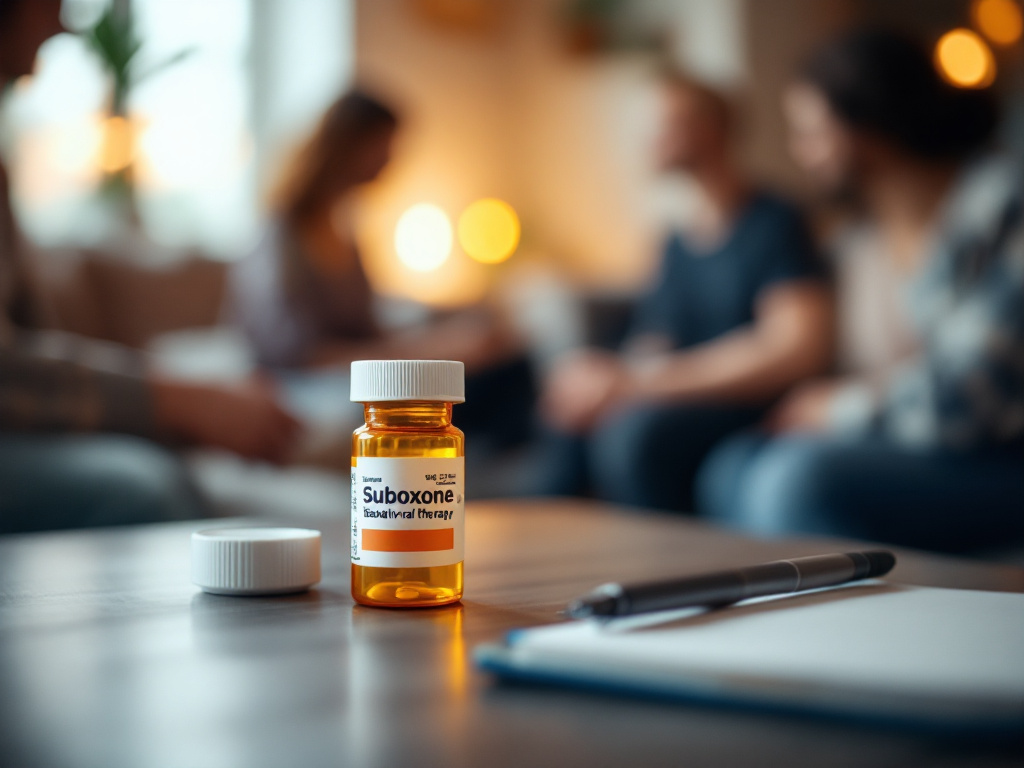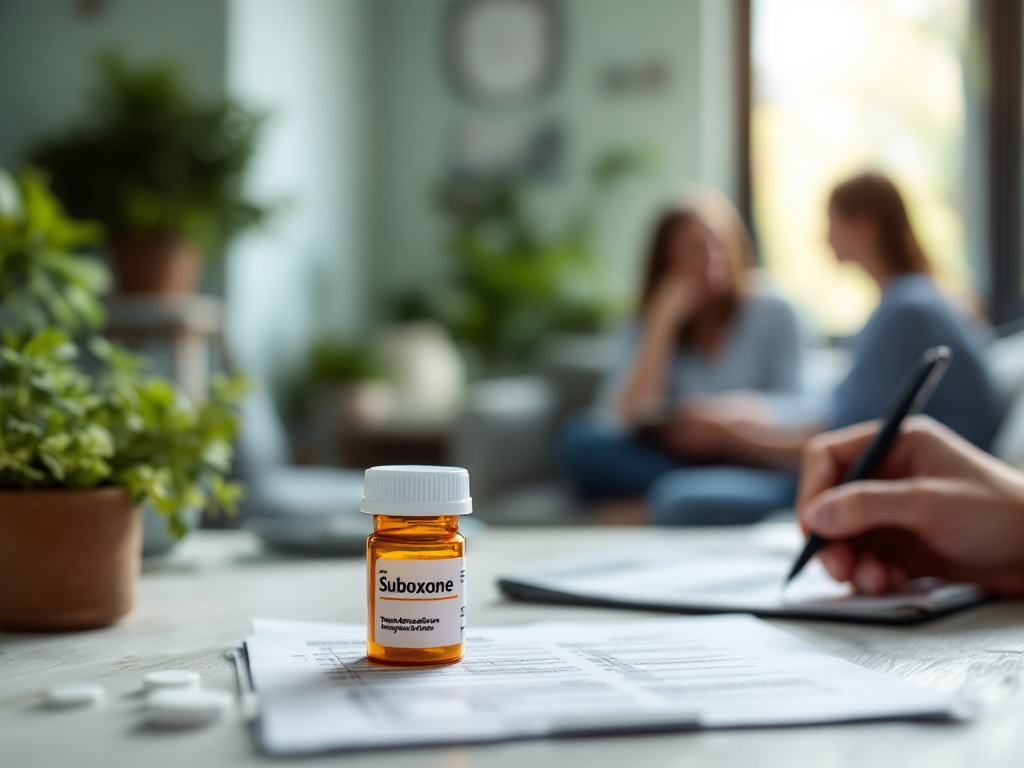Understand maintenance outpatient program
When you’re considering a suboxone maintenance outpatient program, you’re exploring a form of medication-assisted treatment that pairs buprenorphine and naloxone to ease opioid withdrawal symptoms and curb cravings American Addiction Centers. This outpatient model allows you to remain at home, work, or school while receiving regular medical oversight, making it a flexible and accessible path to recovery.
What is medication-assisted treatment
Medication-assisted treatment (MAT) integrates FDA-approved medications with counseling and behavioral support to address opioid use disorder (OUD). By stabilizing brain chemistry, MAT reduces the risk of relapse and improves treatment retention. Suboxone, a branded formulation of buprenorphine-naloxone, is a cornerstone of MAT, offering a safer alternative to full opioid agonists.
How Suboxone works
- Buprenorphine attaches to opioid receptors in your brain, preventing withdrawal without producing the same intensity of euphoria as heroin or prescription opioids.
- Naloxone deters misuse: if Suboxone is injected or snorted, naloxone can precipitate withdrawal symptoms, reducing the likelihood of diversion American Addiction Centers.
- The ceiling effect of buprenorphine lowers overdose risk compared with full opioid agonists such as methadone.
Explore outpatient treatment benefits
Outpatient treatment offers distinct advantages if you need to balance recovery with daily responsibilities.
Flexibility and accessibility
- Attend weekly or biweekly appointments instead of daily clinic visits
- Maintain work, school, and family commitments
- Access telehealth for medication management via a virtual suboxone medication clinic
- Schedule same-day visits through a same day buprenorphine appointment
Compared with methadone clinics, which often require daily dosing on-site, a Suboxone-based outpatient approach reduces barriers to care and stigma.
Phases of outpatient care
Outpatient Suboxone therapy typically follows three phases—induction, stabilization, and maintenance—with clear milestones and individualized timelines 70x7WM.
Induction
- Abstain from opioids for 12–24 hours before the first dose
- Undergo an initial evaluation, vital sign checks, and lab tests
- Start with a moderate buprenorphine dose; observe for withdrawal relief
Stabilization
- Adjust your dose to manage cravings and withdrawal without sedation
- Increase counseling frequency to address triggers and coping strategies
- Monitor for side effects such as nausea, sweating, or drowsiness AppleGate Recovery
Maintenance
- Continue a consistent Suboxone dose that minimizes cravings
- Transition to monthly or quarterly medical visits if stability is achieved
- Focus on relapse prevention and long-term wellness
Assess your suitability
Before you enroll, consider both clinical and personal factors to determine if an outpatient maintenance plan aligns with your recovery needs.
Clinical considerations
- Confirm an OUD diagnosis and absence of contraindications
- Evaluate co-occurring conditions such as depression or anxiety
- Ensure you can engage in psychosocial support, including counseling or peer groups
Lifestyle factors
- Have a stable living environment and reliable transportation
- Commit to scheduled visits and at-home dosing guidelines
- Identify a support network to encourage accountability
If you face severe withdrawal risk or lack stable housing, an inpatient program might be more appropriate initially.
Expect program structure
Understanding the components of an outpatient Suboxone program can help you prepare mentally and logistically.
Medication management
- Initial intake with an addiction specialist to set your dose
- Regular check-ins for dosage adjustments based on your response
- Lab work as needed to monitor liver function and overall health
Counseling and support
A comprehensive plan combines Suboxone with therapies that address behavioral and emotional aspects of addiction.
- Individual counseling
- Group therapy sessions
- Peer support groups tailored for various populations (veterans, professionals, trauma survivors) American Addiction Centers
- Referral to community resources and 12-step programs
Program outcomes
Research shows significant improvements for individuals on buprenorphine maintenance. In one study of 220 participants, the first year of treatment produced:NCBI PMC
| Outcome measure | Change after 12 months |
|---|---|
| Hospitalizations | –45% |
| Emergency visits | –23% |
| Legal charges | –11% |
| Zero hospital visits | 51% of patients |
These results underscore the role of sustained outpatient care in reducing health crises and legal complications.
Combine with therapy approaches
For lasting recovery, medication must be paired with evidence-based treatments that address underlying behaviors and stressors.
Behavioral therapies
- Cognitive behavioral therapy to reframe negative thought patterns
- Motivational interviewing to strengthen commitment to change
- Contingency management that rewards treatment milestones suboxone and behavioral therapy program
Holistic interventions
- Yoga and meditation to reduce stress and improve mindfulness
- Art and music therapy to explore emotions safely suboxone medication support therapy
- Nutrition education and exercise plans to support overall wellness
By integrating these modalities, outpatient programs create a supportive environment for healing and resilience.
Check insurance coverage
Most major health plans recognize buprenorphine maintenance as a gold-standard OUD treatment, but verifying your benefits can prevent surprises.
Typical coverage options
- Commercial plans often cover Suboxone as a preferred medication with minimal copays
- Medicaid frequently includes Suboxone in its formulary suboxone therapy covered by medicaid
- Medicare Part D plans may have tiered coverage—check your formulary
Verifying your benefits
- Contact your insurer or use an insurance verified suboxone treatment portal
- Confirm prior-authorization requirements and any quantity limits
- Inquire about telehealth coverage and co-pay assistance programs
Knowing your out-of-pocket costs and coverage details helps you focus on recovery instead of billing issues.
Choose a trusted provider
Selecting the right outpatient clinic or telehealth service is crucial for seamless care and accountability.
Key provider features
- Board-certified addiction specialists and multidisciplinary teams
- Individualized plans that adapt as your needs evolve
- Access to behavioral therapies and peer support on-site or virtually
- Transparent billing and insurance coordination outpatient mat clinic accepting insurance
Telehealth and same-day access
Freedom Healthcare positions itself as a trusted outpatient MAT provider by offering:
- Same-day telehealth scheduling for urgent need same day buprenorphine appointment
- Virtual consultations through a secure virtual suboxone medication clinic
- Electronic prescriptions for mail-order or local pharmacy pickup
- Ongoing remote monitoring and digital support tools
This model reduces wait times and supports continuity of care, even if life circumstances change.
Take your next steps
Embracing a suboxone-based outpatient maintenance plan can be the catalyst for lasting recovery. Here’s how to get started:
Preparing for intake
- Gather your medical history, current prescription list, and identification
- Compile insurance information and pharmacy preferences
- Identify a support person who can accompany you or help with logistics
Scheduling your appointment
- Visit a provider directory to find an outpatient suboxone prescription program near you
- Book a consultation, often available within 24 hours via telehealth
- Complete any required intake forms and initial lab screenings
- Attend your induction appointment and begin your personalized plan
By taking swift, informed action, you position yourself for a recovery journey backed by comprehensive care and professional support. If you’re ready to explore an outpatient maintenance solution, reach out for a same day buprenorphine appointment and start your path to stability today.











